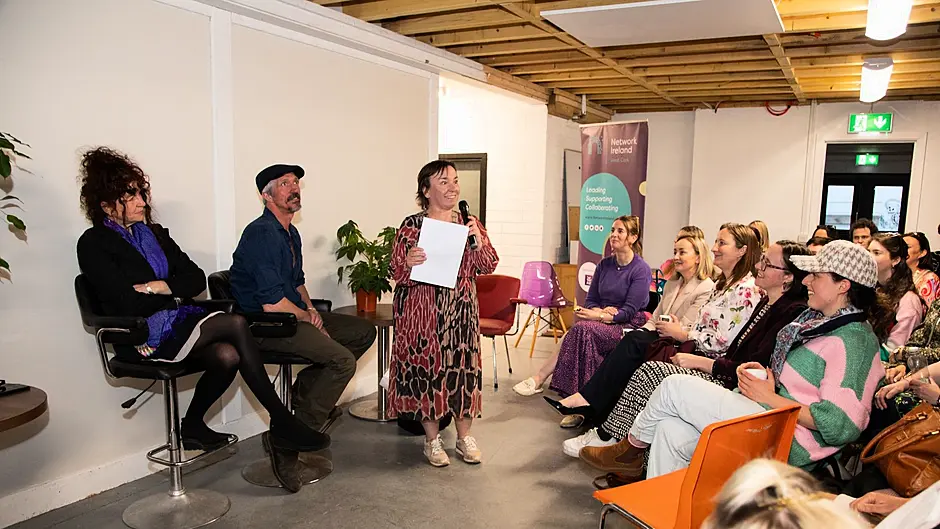The area’s reputation as a mecca for film making is growing all the time, due to a combination of talent, landscape, and even, believe it or not, the weather, writes Jackie Keogh.
Skibbereen based West Cork Film Studio (WCFS) directors Édaín O’Donnell and Steve Park recently opened the doors on the Baltimore Road to the members of Network Ireland West Cork, and The Southern Star tagged along to learn everything about the world of the silver screen.
Despite recent noise across the water about tariffs, Ireland is a huge draw for the filmmaking industry. In fact, three more film projects are being considered for West Cork, according to one of the directors, Édaín O’Donnell.
The recent filming of Hokum, a supernatural horror film starring Adam Scott, garnered much media coverage in Ireland and the US, and served to highlight how much more cost-effective it is to work in Ireland than the US.
In a podcast, actors Rob Lowe and Adam Scott complained about the lack of industry incentives in California, which makes it ‘cheaper to bring 100 people to Ireland than to walk across the lot at Fox, past the sound stages, and do it there.’
Rob Lowe said there are no tax credits available to them in the US, unlike zoned areas of Ireland, which have the added benefits of ‘all the other stuff they do’ to welcome film production.
‘That’s not even talking about union stuff. It’s just tax, the economics of it all. It’s criminal what California and LA have let happen. Everybody should be fired,’ he said.
A recent study carried out by Virgin Media established that Cork county, with 16 movies and TV shows to its credit, has been ranked as third in the country as a film destination. Dublin, with 104 films came out on top, followed by county Wicklow with 40 films and TV shows.
With some of the latest West Cork productions reported to be worth in excess of €2m to the economy, these productions can provide financial opportunities for locals and businesses, whether it is the employment of extras, or the provision of products and services.
However, the success of a studio is dependent on the affordability of the production, particularly for accommodation.
Some areas have priced themselves out of the market, warned Édaín, who quoted one property owner who increased their house rental price from €1,400 per week to €2,000 when they heard a film crew was involved.
The reply from WCFS was ‘thank you but no thank you,’ and ‘we will not be doing business with you again.’
As a full-service film studio, Édaín said they will not work with people who take such a limited view of an industry, that she says has untold potential for every aspect of the community be it hardware, grocery, accommodation or catering.
Everything from carpenters and electricians to accountants are needed at the studio during a production, and the team at WCFS highlighted the opportunities there are for young people in particular to get their foot in the door of the filmmaking industry by working at the Skibbereen premises.
The film studio have established a company to enlist extras who are paid a ‘handsome’ daily rate when the film crews come to town, and have also set up a training programme covering all aspects of the business.
Édaín happily reported that on the last production, she had an all-female group of professional and trainee painters.
A quirky element of West Cork is the variety of landscapes, not just the natural landscape but the urban too, as Édain told how they’d filmed a San Francisco scene on the streets of Bandon.
The outdoors is complemented by the cavernous, soundproofed studios on the Baltimore Road and even West Cork’s climate adds to the attractiveness of the area for movie makers, said Édaín.
However, the one thing that West Cork does not have is a TV series, and that is something that Édaín believes is not beyond the bounds of possibility.
Imagine, she said, what a good soap, like Fair City or Ros na Rún would do for West Cork?
All that’s missing is the storyline.
The location, the talent, the crews, and the studios are all here, waiting for it to happen.








